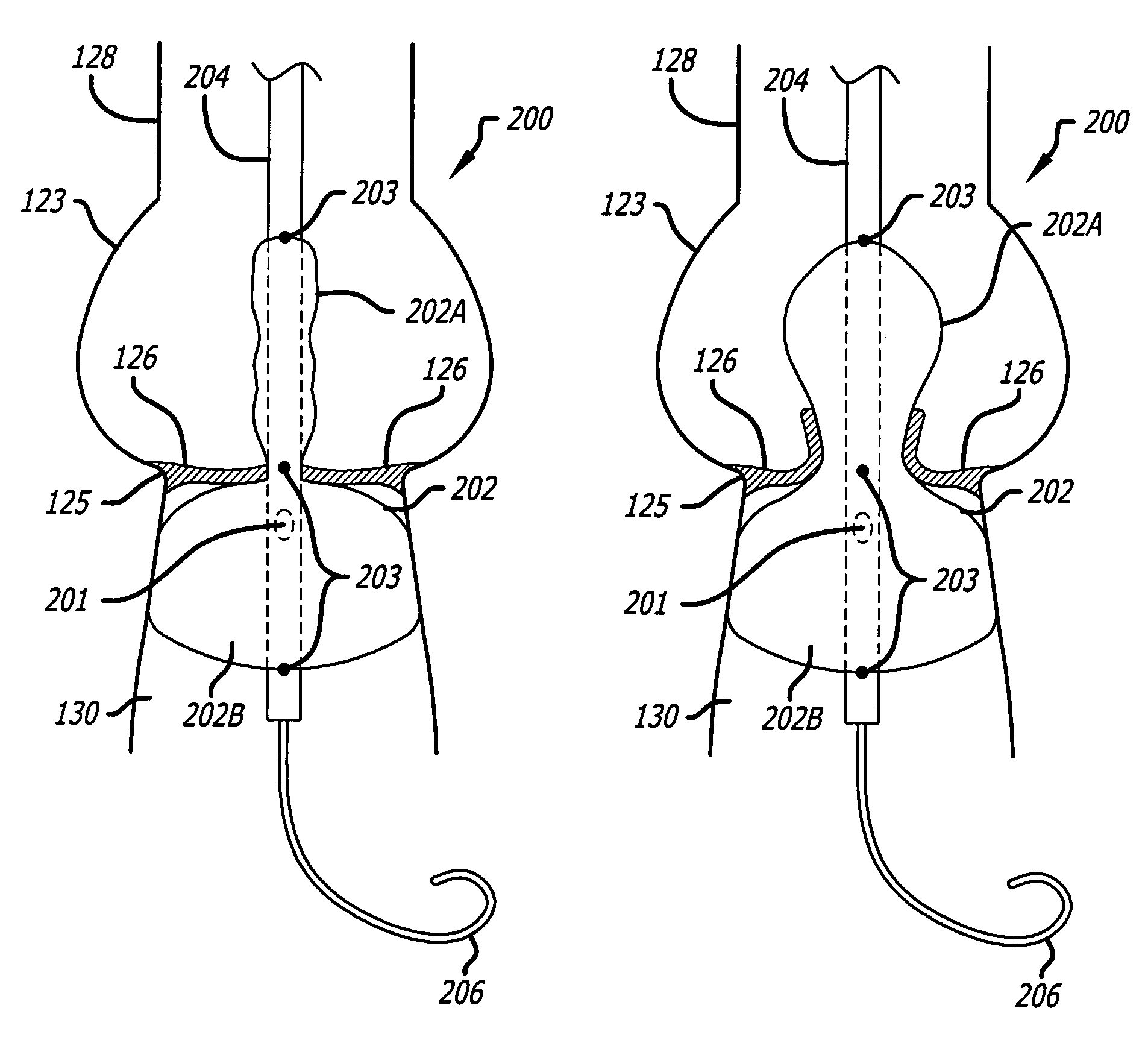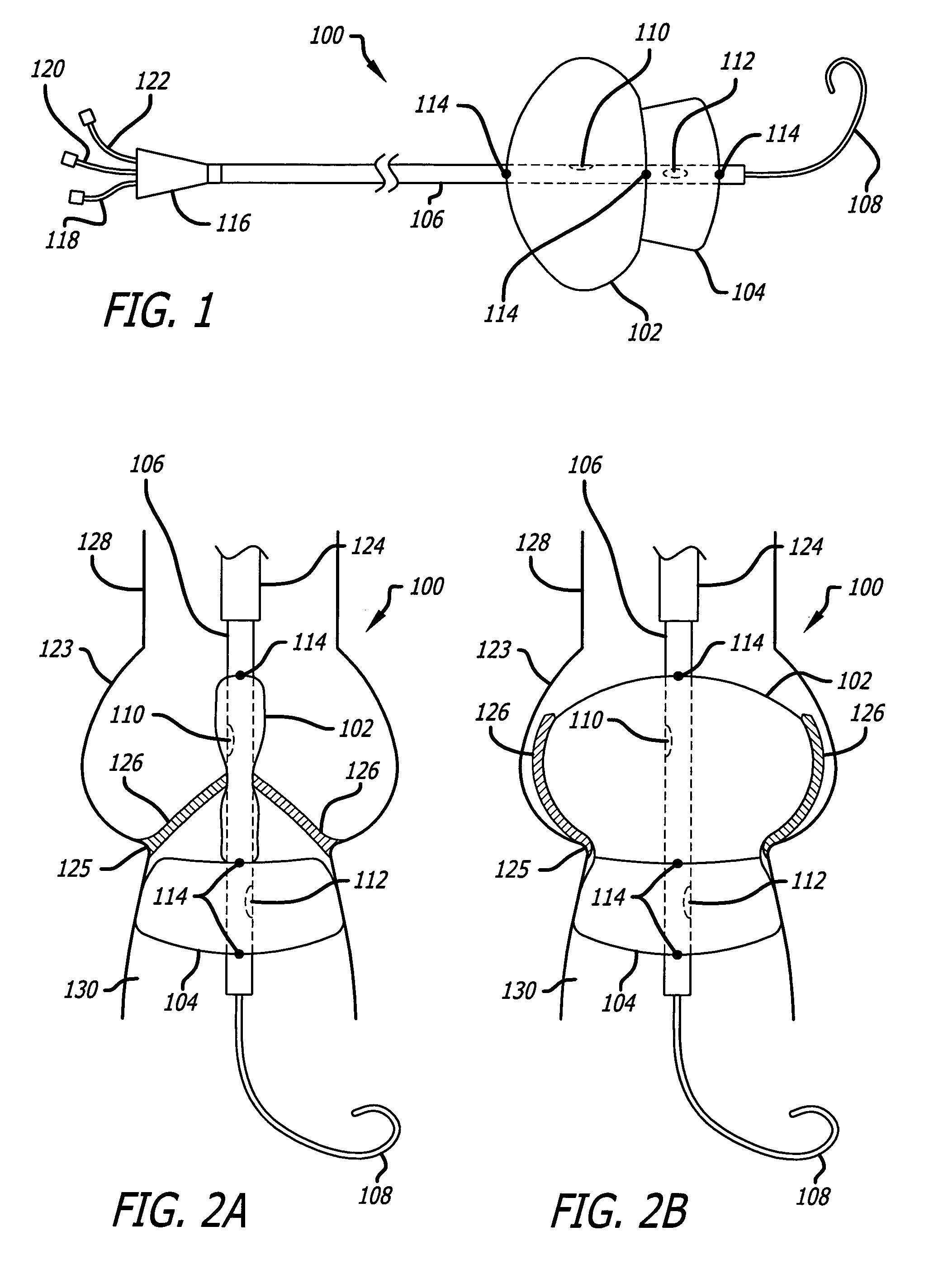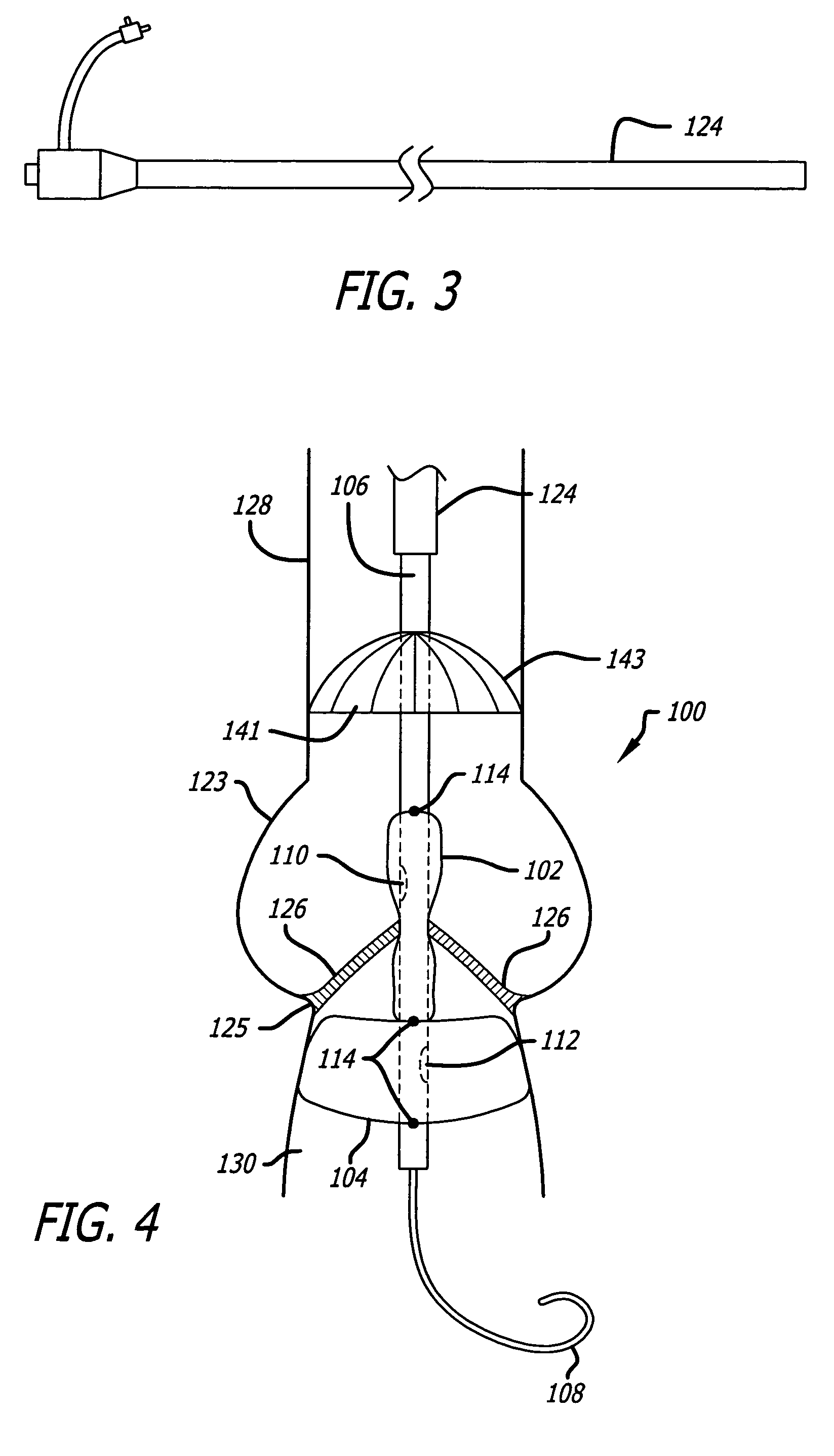Valvuloplasty devices and methods
a valvuloplasty and device technology, applied in the field of balloon catheters, can solve the problems of limiting the ability of valvular heart disease acquisition, reducing the effectiveness of therapy, and reducing the possibility of intracardiac trauma, so as to reduce the risk of intracardiac trauma, and reduce the risk of injury
- Summary
- Abstract
- Description
- Claims
- Application Information
AI Technical Summary
Benefits of technology
Problems solved by technology
Method used
Image
Examples
second embodiment
[0084]Referring to FIGS. 5G-5I, in a second embodiment, the LVOT segment 202b of the balloon 202 is fiber-reinforced such that it is either non-compliant or only partially compliant while the proximal aortic portion 202a is fiber-reinforced such that it exhibits compliant characteristics but only after a threshold pressure is reached. For example, the LVOT segment 202b may be comprised of a non-compliant or partially compliant PET or nylon plastic material while the proximal aortic portion 202a may be comprised of elastic filaments (e.g., spandex) that are compliant only after a threshold pressure. As a result, when pressure P1 is introduced into the balloon 202, the LVOT segment will resist expansion or only slightly expand until a pressure P1 is achieved, at which point the LVOT segment 202 will expand to a shape constrained by its PET or nylon plastic construction and which conforms to the LVOT. Then, when pressure increases to P2, the LVOT segment 202b will remain in its expande...
third embodiment
[0087]Referring to FIGS. 5J-5L, in a third embodiment, the balloon 200 may be a composite of a balloon membrane and a fabric with the fabric covering essentially the entire balloon membrane. The makeup of the fabric would control and govern the shape ultimately achieved by the balloon membrane and the makeup of the balloon membrane would control and govern the expansion system of the fabric. More specifically, the fabric would include fibers that limit the expansion of the balloon to certain predetermined shapes and sizes and the balloon membrane would include either different thicknesses or different material elasticity along its length so that the LVOT portion 202a expands prior to expansion of the proximal aortic properties 202b.
[0088]In this regard, in a preferred embodiment the fabric could be comprised of a 200-300 denier PET yarn that could be woven, knitted or braided and wherein the fibers are configured to control the expansion shape of the fabric. In a weave embodiment, ...
PUM
 Login to View More
Login to View More Abstract
Description
Claims
Application Information
 Login to View More
Login to View More - R&D
- Intellectual Property
- Life Sciences
- Materials
- Tech Scout
- Unparalleled Data Quality
- Higher Quality Content
- 60% Fewer Hallucinations
Browse by: Latest US Patents, China's latest patents, Technical Efficacy Thesaurus, Application Domain, Technology Topic, Popular Technical Reports.
© 2025 PatSnap. All rights reserved.Legal|Privacy policy|Modern Slavery Act Transparency Statement|Sitemap|About US| Contact US: help@patsnap.com



